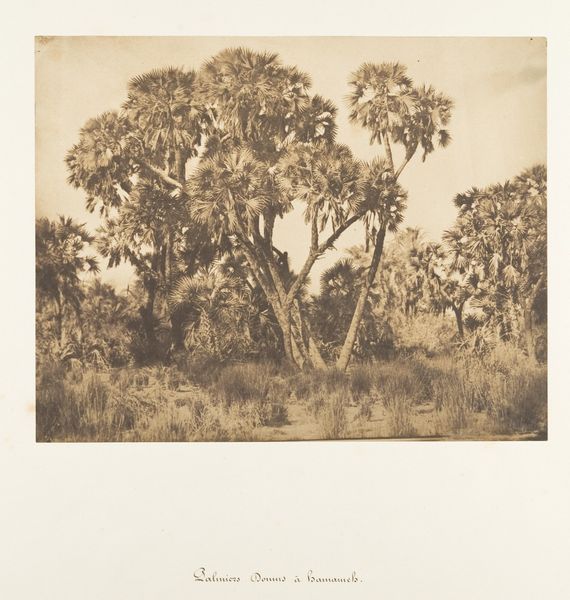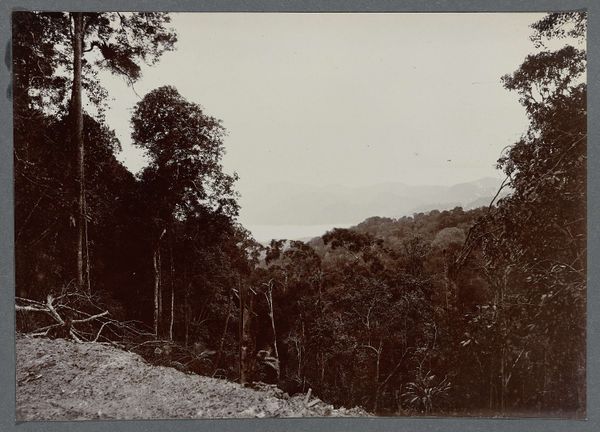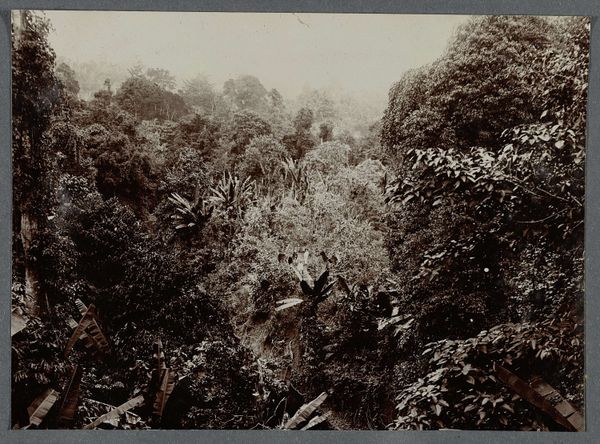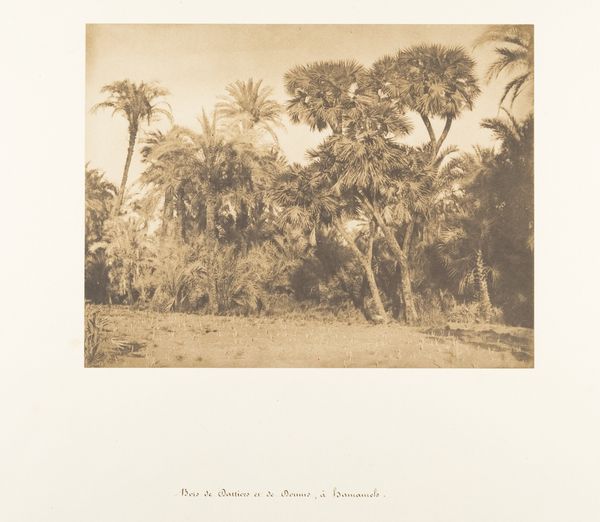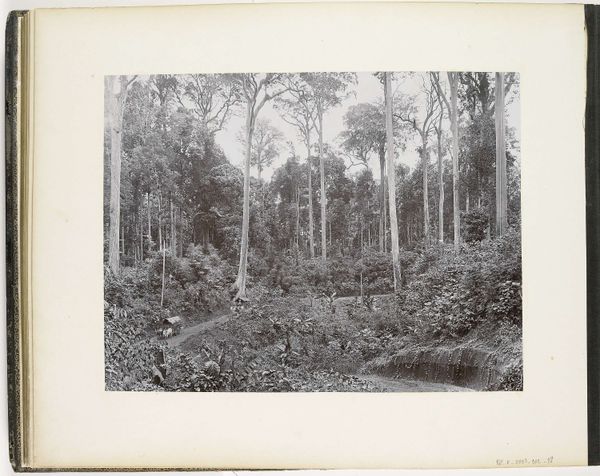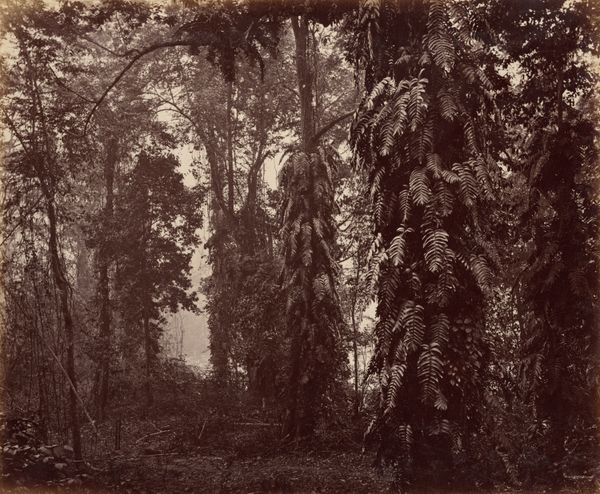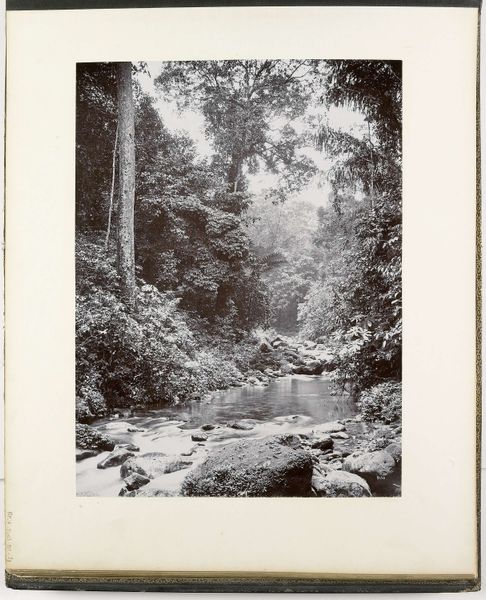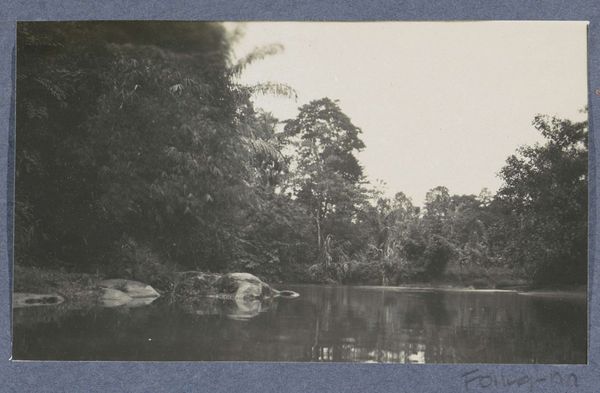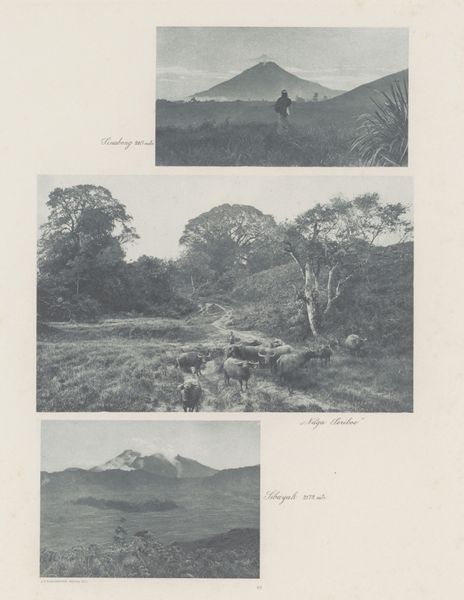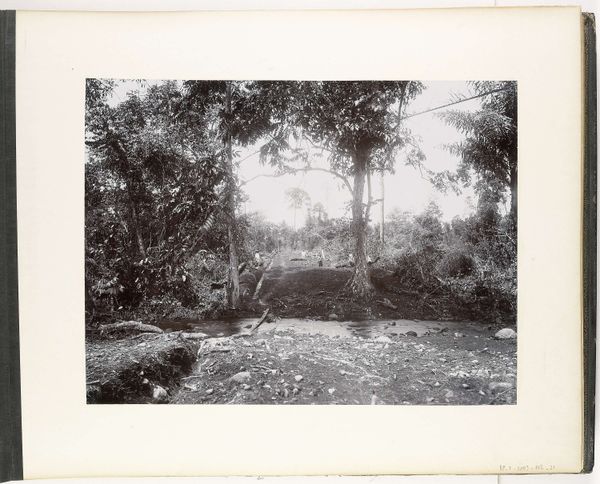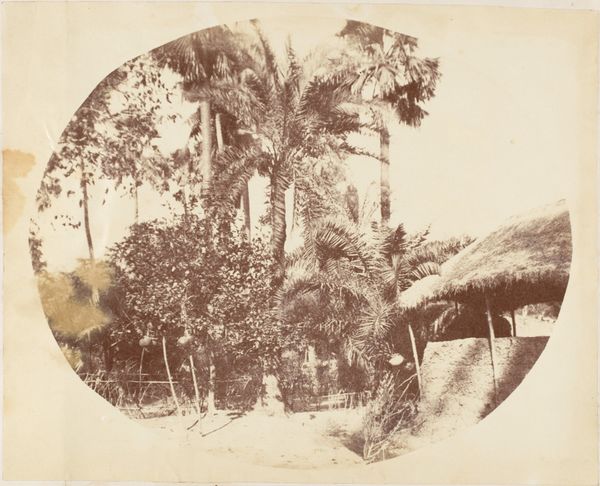
photography, gelatin-silver-print
#
aged paper
#
pictorialism
#
landscape
#
photography
#
gelatin-silver-print
#
monochrome
Dimensions: height 122 mm, width 172 mm
Copyright: Rijks Museum: Open Domain
Editor: Here we have an intriguing gelatin silver print, "Panorama van uit den Noord-toren (bergen in de verte)," created sometime between 1905 and 1910 by an anonymous artist. The view, shrouded in soft focus, evokes a strong sense of atmosphere, a kind of romantic quietude. Given its time and subject, what societal currents might be flowing beneath this image? Curator: The "Panorama" evokes a fascinating moment in the history of both photography and Dutch colonial engagement. Images like this, especially during that period, participated in constructing and circulating ideas about the "exotic" other. Do you notice the high vantage point from the "Noord-toren", the North Tower? Editor: Yes, it’s definitely elevated, affording this broad vista. Is the vantage point significant? Curator: Precisely. It reinforces the Western gaze looking down upon the land. Consider how such images contributed to a broader colonial project – visually mapping, claiming, and controlling territory and resources, and shaping public perception about these distant lands. The soft focus aesthetic—very typical of Pictorialism at the time—while beautiful, might also obscure harsh realities. What do you think is being concealed by its aesthetic choices? Editor: That's insightful! Perhaps it sanitizes the colonial project, focusing on the beauty of the landscape while omitting the socio-political context and perhaps even the exploitation of resources or the indigenous population? Curator: Exactly! It prompts questions about the ethics of representation, power dynamics, and the relationship between artistic expression and its political consequences. Editor: So this "Panorama" is much more than just a pretty landscape; it's a document intertwined with the complexities of its time. I hadn't considered its political dimensions so explicitly. Curator: That’s the exciting thing about viewing art through a historical lens. We begin to unpack these hidden layers of meaning.
Comments
No comments
Be the first to comment and join the conversation on the ultimate creative platform.
